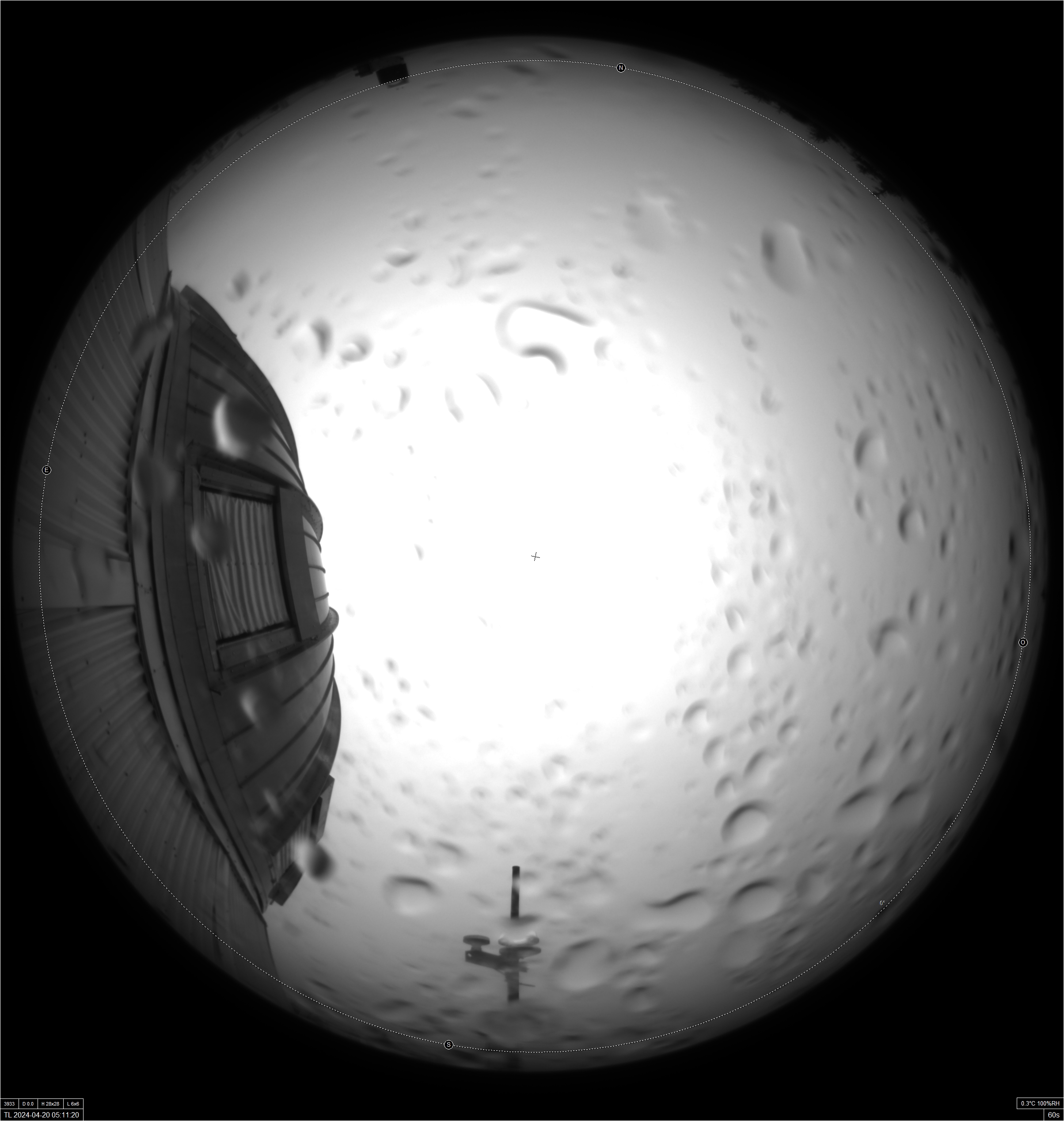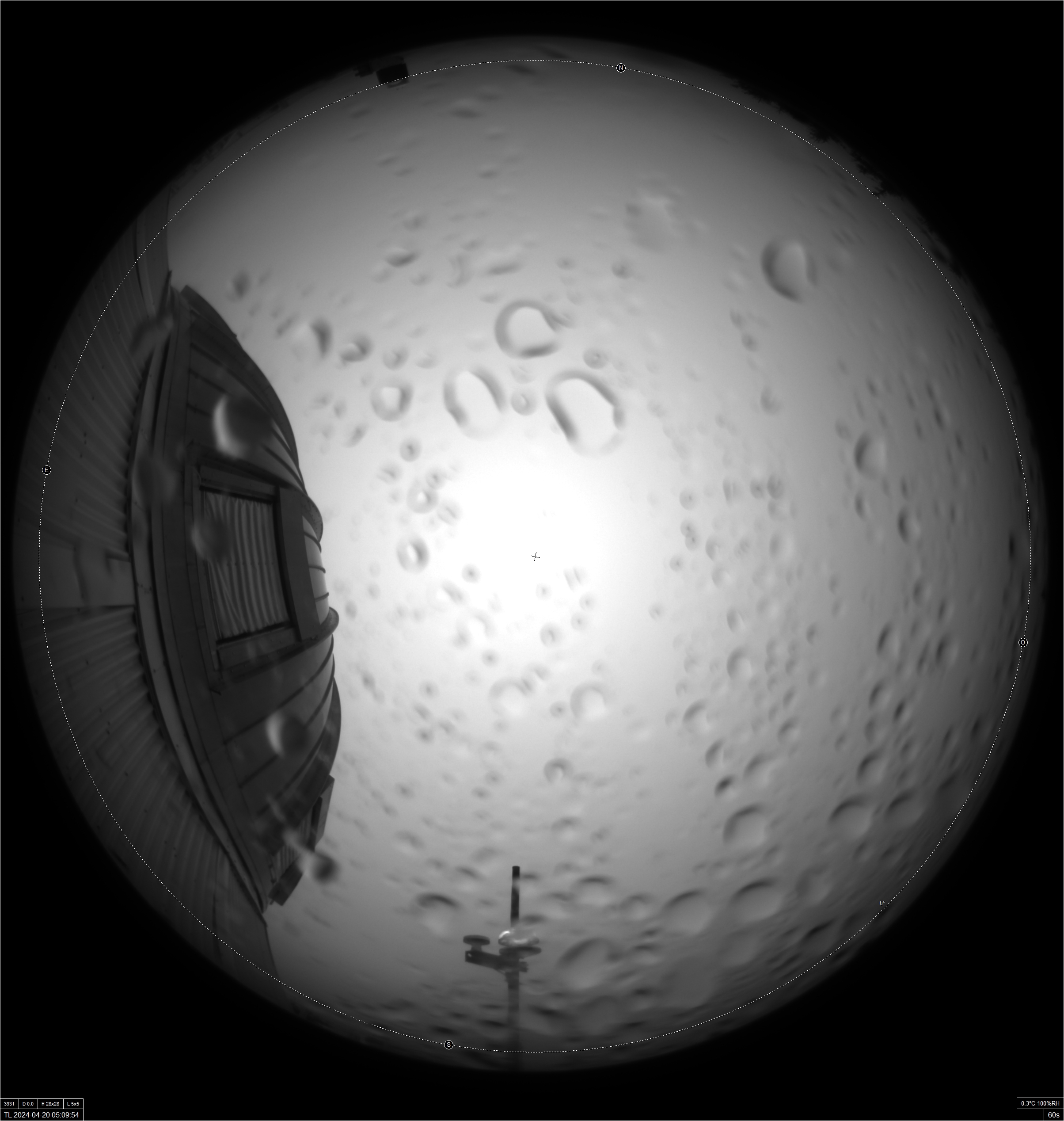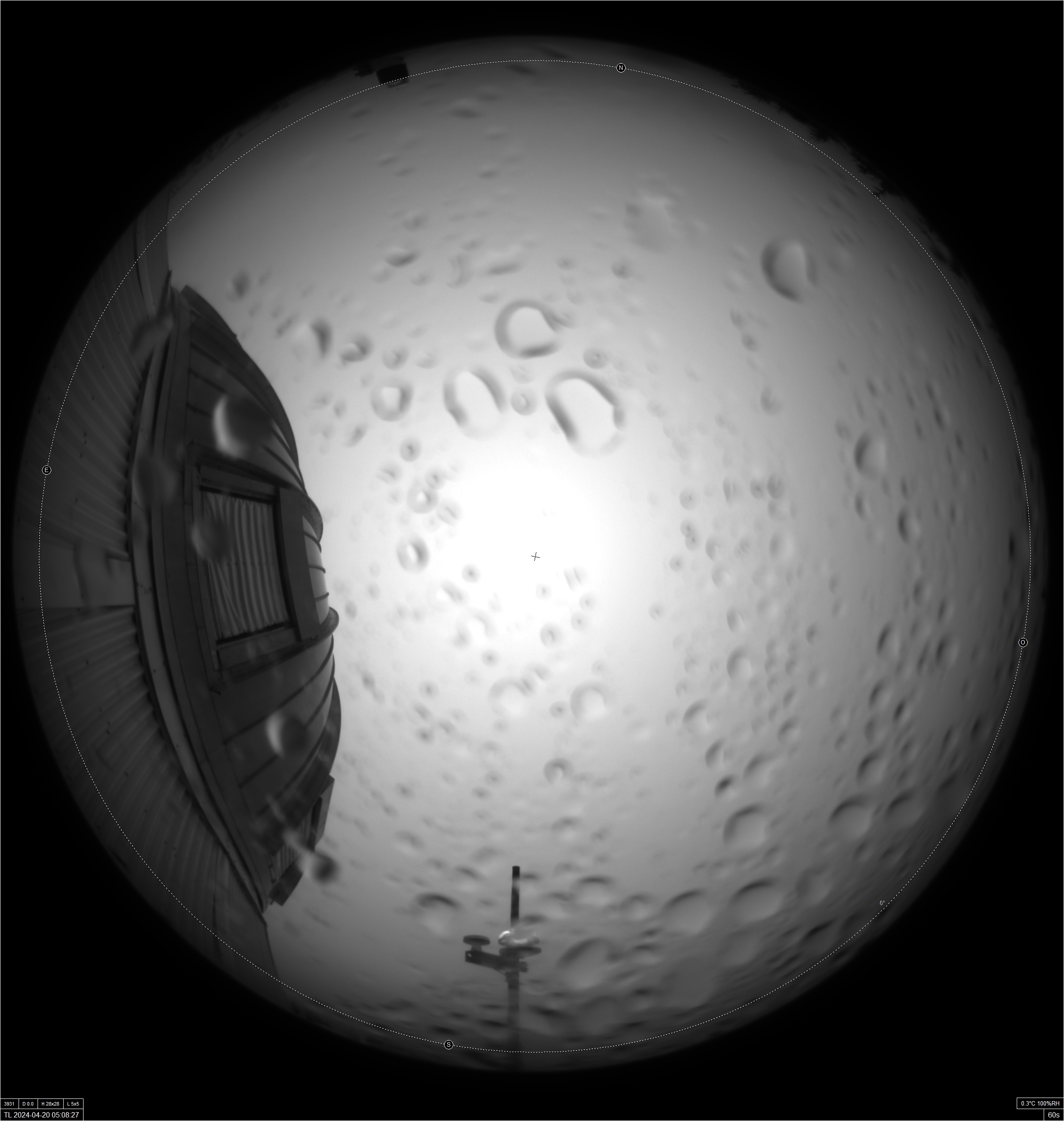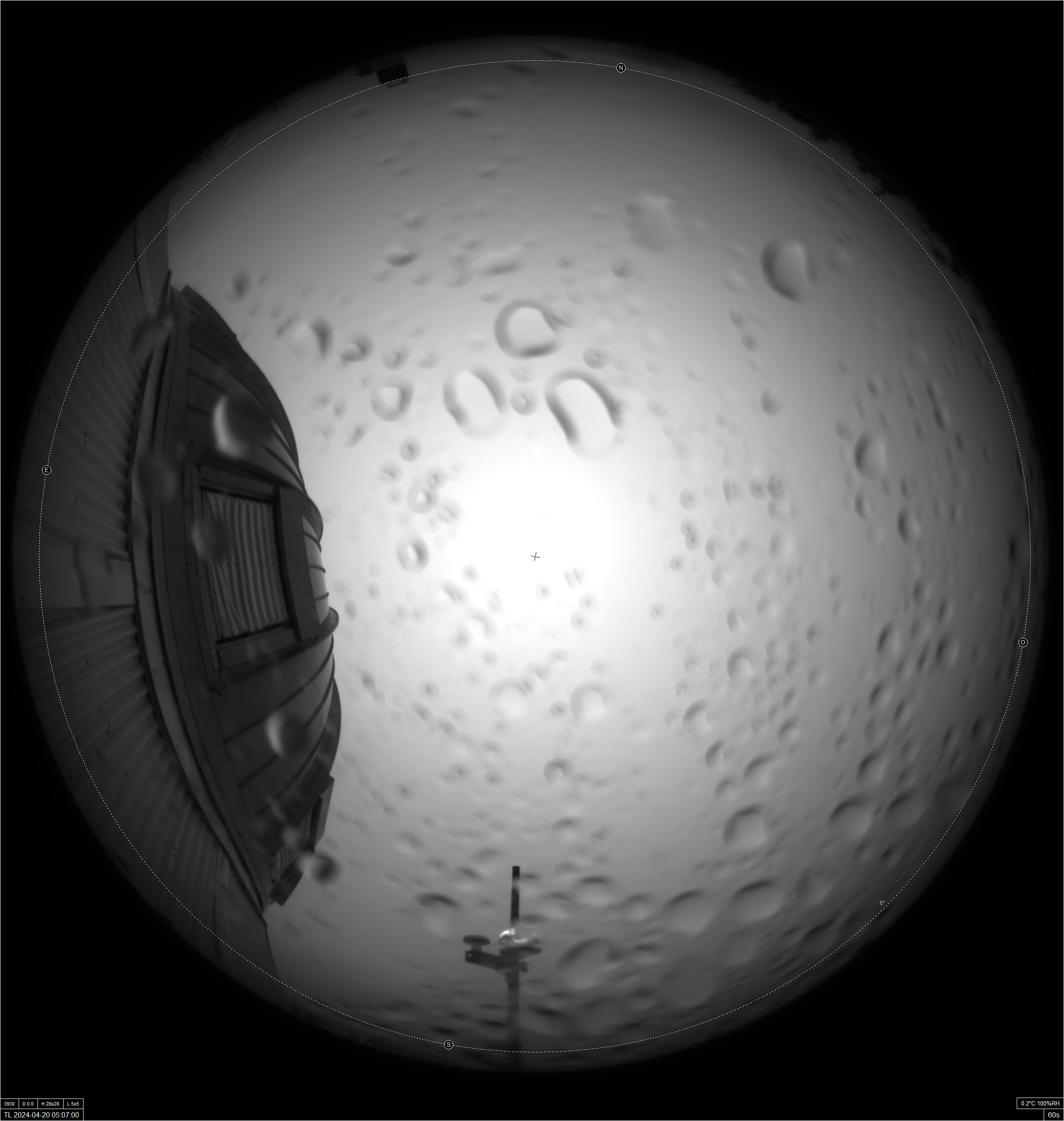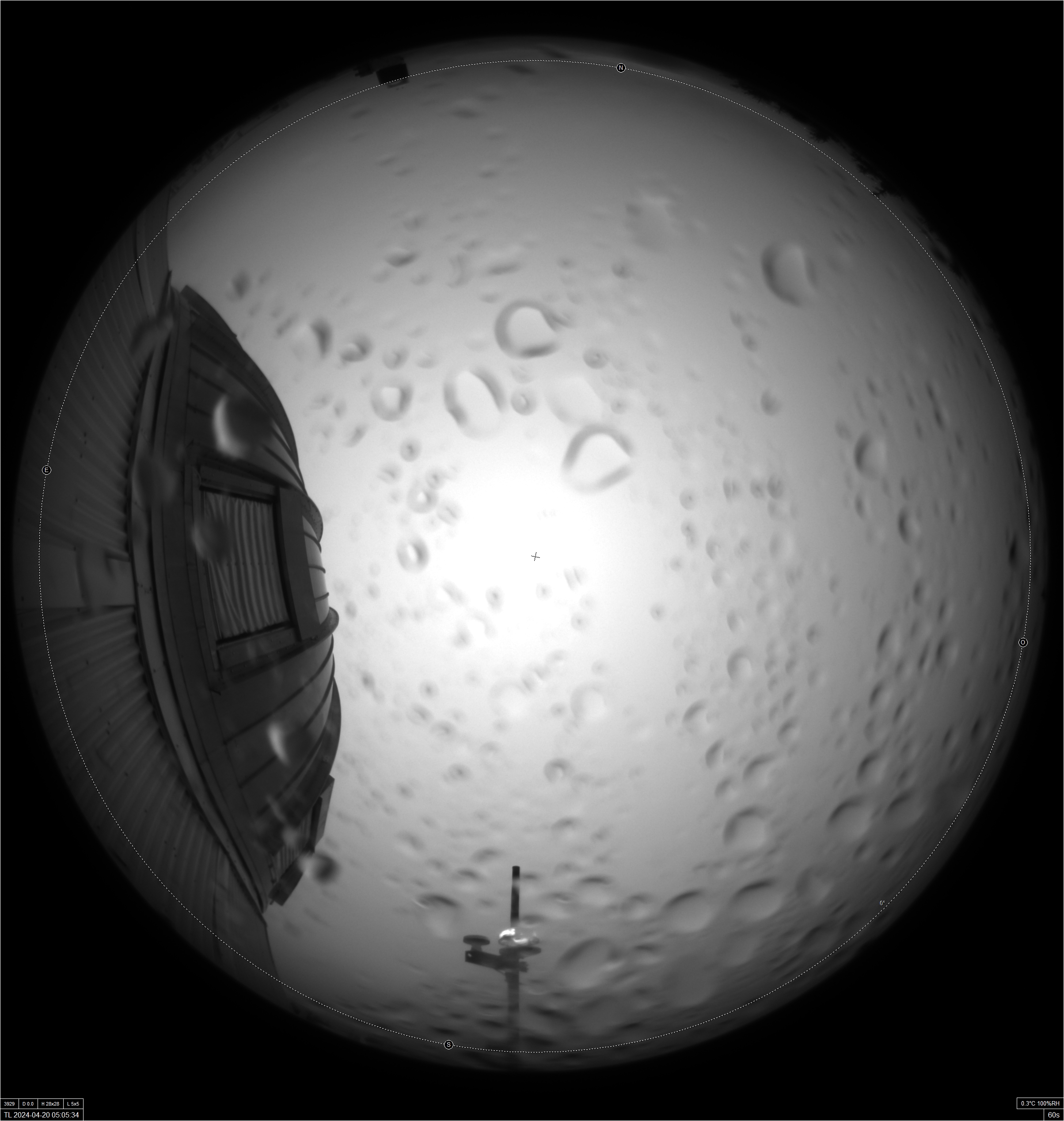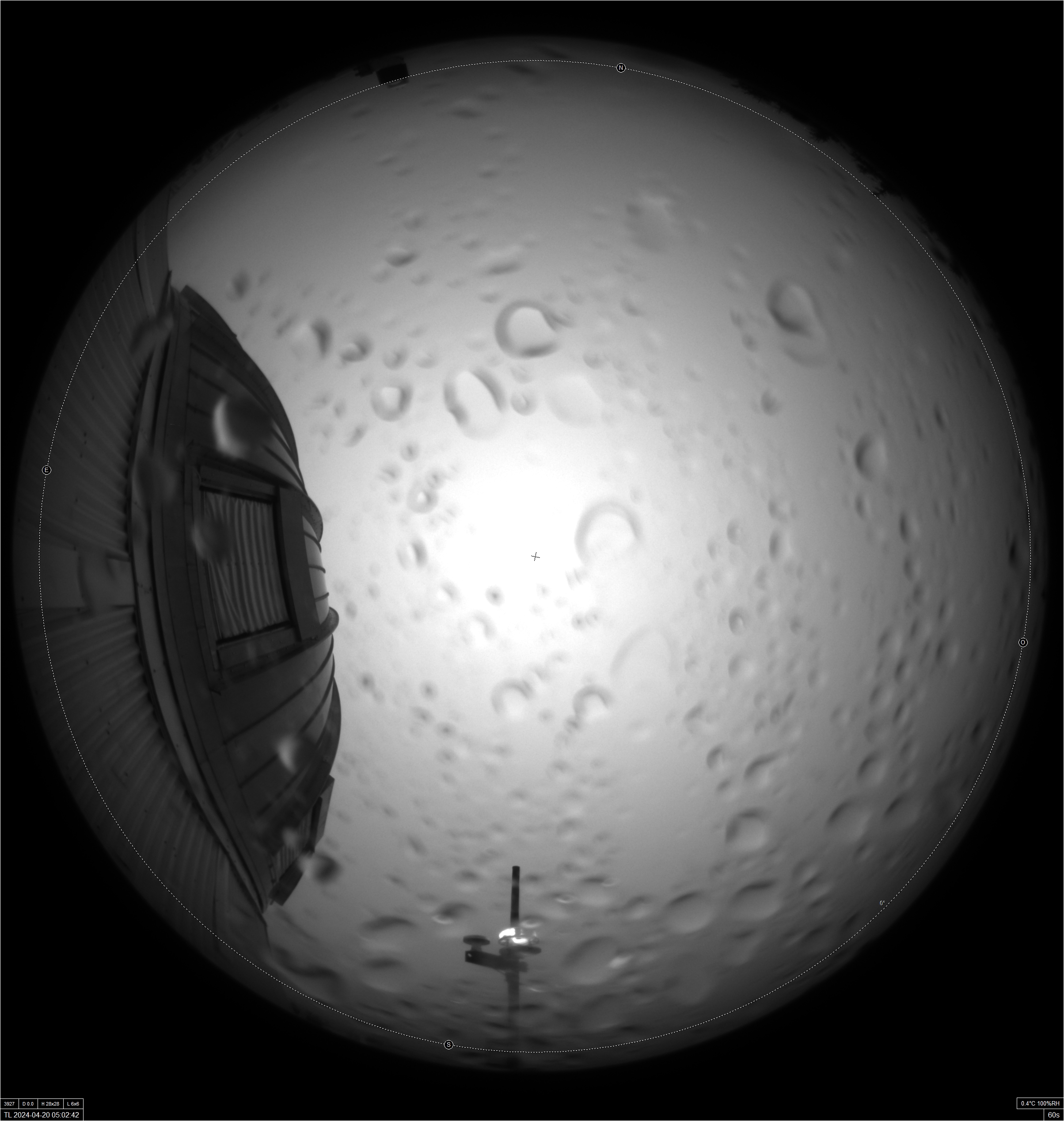Weather Conditions

Careful monitoring of the skies above the mountain is incredibly important for all aspects of operations at the Observatoire du Mont-Mégantic. In preparation for and throughout a night of observations, several meteorological conditions are carefully tracked to ensure high quality data collection and safety for the telescope, instruments, and staff. These conditions include:
Cloud cover
Thick cloud layers make it exceptionally hard to observe our night sky! Clouds block or distort the light from stars and galaxies, reducing the quality of observations and potentially making them impossible. Clear skies are best for astronomers to obtain accurate and detailed data from space. A night of observations at the observatory can sometimes start late or end early depending on how the clouds are passing through the region.
Wind Speed
The telescope at OMM is housed within a large, rotating dome to protect it from the elements and high winds can stress the dome’s structure. High winds can also introduce vibrations and movement, compromising the stability needed for clear and detailed observations. By closely monitoring wind speed, OMM staff can make informed decisions about dome operations, and ensure quality data collection while prioritizing the safety of OMM’s telescope and instruments.
Temperature, Humidity, and Precipitation
High humidity levels can lead to dew or frost formation on the telescope’s delicate optics, degrading observations. Researchers and staff at the OMM closely track precipitation as well to protect the telescope’s sensitive equipment from rain or snow damage. The telescope operates at a wide range of temperatures, but dome operations cease when temperature’s drop below -30C. At these very cold temperatures, the lubricant used to facilitate the movement of the telescope starts to solidify, making attempts to reorient the telescope risky.
Air Quality
Airborne particulates and poor air quality can affect the clarity of the sky. For example, wildfires release large amounts of smoke, ash, and other particulate matter into the atmosphere. These particles scatter and absorb light, leading to reduced atmospheric transparency. Smoky conditions also lead to turbulence in the atmosphere, causing “seeing” – the steadiness and sharpness of astronomical images – to degrade. This affects the ability to capture high-resolution images and perform precise measurements of astronomical objects. Although this is not usually a serious concern at OMM, a growing increase in regional wildfires may lead to this becoming a bigger issue in the future.
OMM staff use a variety of satellite images from national and provincial weather agencies to track these conditions each day. Check out some examples here:
|
|
|
![]()
|
|
|
![]()
|
|
|
![]()
|
|
|
|
|
|
![]()











